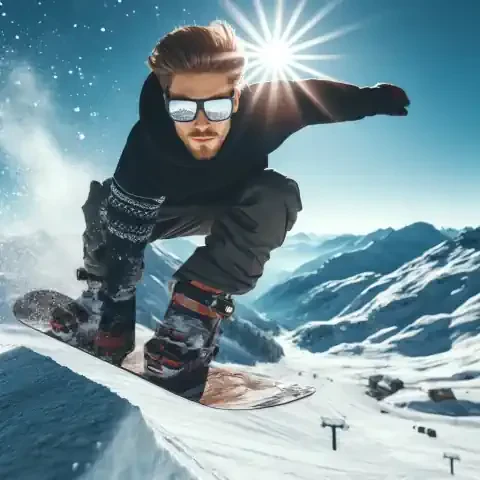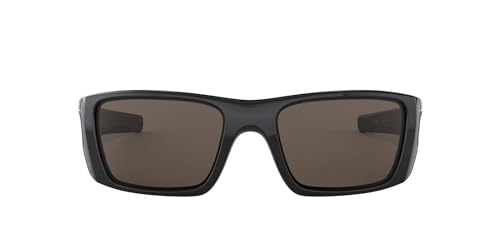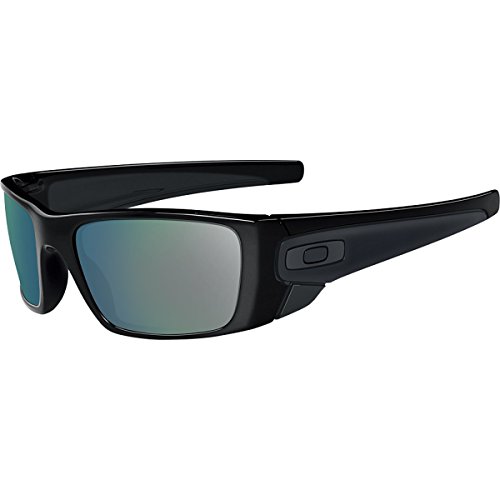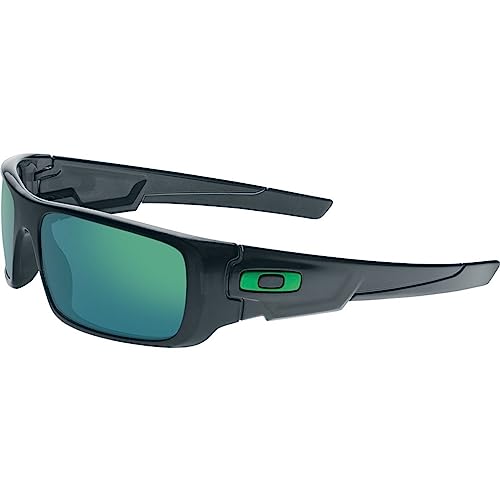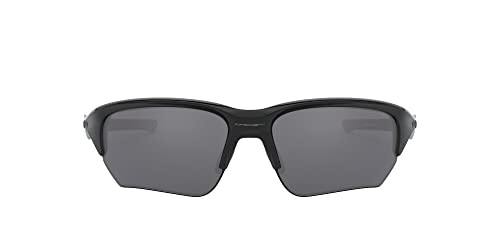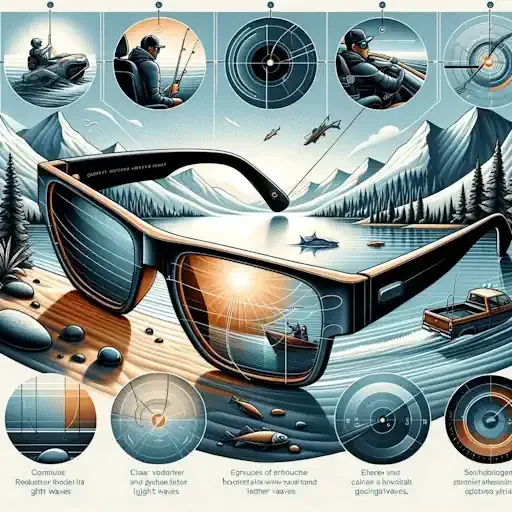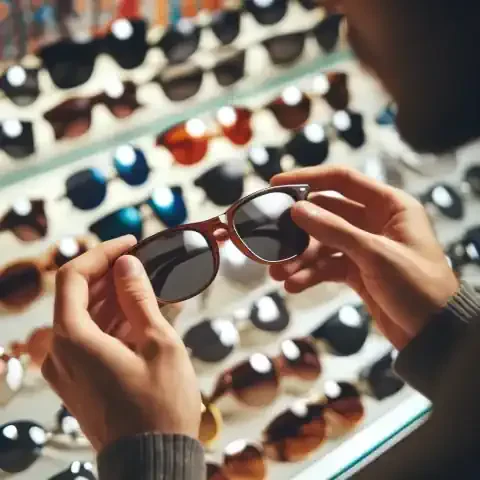Maximizing Safety and Style with the Right Sunglasses for Skiing
Skiing isn't just about gliding down pristine slopes or feeling the crisp mountain air against your cheeks—it's also about ensuring your safety on the mountain. Among the essential gear every skier should have, sunglasses often don't receive the attention they deserve. However, they play a crucial role in protecting your eyes from the harsh elements and enhancing your visibility on the snow-covered terrain.
As you carve through the slopes, your eyes are exposed to a myriad of hazards that can impact your vision and overall skiing experience. The combination of intense UV rays bouncing off the snow's surface, blinding glare, and the whipping wind can pose serious risks to your eye health. Without adequate protection, prolonged exposure to these elements can lead to discomfort, vision impairment, and even long-term damage such as cataracts or snow blindness.
Understanding these hazards is the first step in appreciating the importance of wearing sunglasses specifically designed for skiing. UV radiation, in particular, is a pervasive threat on the mountain. Snow reflects up to 80% of UV radiation, significantly increasing the exposure your eyes receive. Without proper protection, this can lead to conditions like photokeratitis, commonly known as snow blindness—a painful temporary loss of vision caused by sunburned corneas.
Moreover, glare from the sun bouncing off the snow can create intense brightness that impairs your ability to see clearly. Squinting to combat glare not only strains your eyes but also hampers your focus, affecting your reaction time and increasing the risk of accidents. Additionally, the wind and flying debris on the slopes can cause irritation and even injury to your eyes if left unprotected.
To mitigate these risks, investing in high-quality sunglasses specifically designed for skiing is paramount. But with a myriad of options available on the market, choosing the right pair can be overwhelming. That's why this comprehensive guide is here to help you navigate the intricacies of selecting sunglasses that not only safeguard your eyes but also enhance your performance and style on the mountain.
In the following sections, we'll delve into the essential features to look for in ski sunglasses, explore specialized designs tailored to skiers' needs, and provide practical tips on maintenance and care. Whether you're a seasoned pro or a novice hitting the slopes for the first time, this guide will equip you with the knowledge to make informed decisions and ensure your skiing adventures are as safe and enjoyable as possible. So, buckle up (or should we say, strap on your goggles), and let's embark on a journey to find the perfect pair of sunglasses for your skiing escapades.
Understanding the Hazards
A ski slope, with its pristine blanket of snow under the radiant sun, may seem like the epitome of natural beauty and tranquility. However, beneath this picturesque facade lies a host of hazards that can pose significant risks to your eye health and safety. In this section, we'll delve into the various dangers skiers face on the mountain and why protecting your eyes is paramount.
The Dangers of UV Rays
UV radiation is omnipresent, even on cloudy days, and its effects are amplified in high-altitude environments like mountain slopes. Snow acts as a giant mirror, reflecting UV rays with remarkable efficiency. This means that not only are you exposed to direct sunlight from above, but you're also bombarded with UV rays bouncing off the snow from below and all around you.
Prolonged exposure to UV radiation can have serious consequences for your eyes. It can cause a condition known as photokeratitis, which is essentially a sunburn of the cornea. Symptoms include redness, pain, tearing, and temporary vision loss—akin to having sandpaper rubbed over your eyes. While photokeratitis typically resolves within a few days, repeated exposure can lead to long-term damage, increasing the risk of cataracts, macular degeneration, and other eye conditions.
Blinding Glare
Glare is another formidable foe skiers must contend with. When sunlight hits the snow's surface, it creates a blinding glare that can be particularly intense during clear, sunny days. This glare not only makes it difficult to see obstacles and changes in terrain but also causes discomfort and eye strain.
Squinting to combat glare further exacerbates eye strain and fatigue, affecting your ability to react swiftly and accurately to your surroundings. Whether you're navigating through moguls, maneuvering around fellow skiers, or attempting a daring descent, clear vision is paramount for safety and enjoyment on the slopes.
Wind and Debris
As you zip down the mountain, the rush of wind against your face can be exhilarating. However, this wind can also carry with it a barrage of debris—from snowflakes to ice particles—that pose a threat to your eyes. Without proper protection, these airborne hazards can cause irritation, abrasions, or even more serious injuries.
Moreover, the cold, dry air at high altitudes can exacerbate dry eye symptoms, leading to discomfort and reduced tear production. This can further compromise your eye's natural defense mechanisms, making them more vulnerable to environmental irritants and increasing the risk of injury.
In conclusion, the ski slope presents a unique set of challenges for your eyes, from intense UV radiation and blinding glare to wind-blown debris. Understanding these hazards is the first step in appreciating the importance of wearing sunglasses specifically designed for skiing. In the next section, we'll explore the essential features to look for in ski sunglasses to effectively mitigate these risks and ensure your safety and enjoyment on the mountain.
Essential Features to Look For
When it comes to selecting sunglasses for skiing, not all shades are created equal. To effectively protect your eyes and enhance your skiing experience, it's essential to prioritize certain features tailored to the demands of the mountain environment. In this section, we'll explore the key characteristics to consider when choosing the perfect pair of ski sunglasses.
UV Protection
Perhaps the most critical feature to look for in ski sunglasses is adequate UV protection. Opt for sunglasses that provide 100% UV400 protection, blocking both UVA and UVB rays. This ensures your eyes are shielded from the harmful effects of UV radiation, reducing the risk of sunburned corneas, cataracts, and other eye conditions.
Polarized Lenses
Polarized lenses are specially designed to reduce glare from reflective surfaces such as snow, water, and ice. By filtering out horizontal light waves, polarized lenses enhance clarity and contrast, allowing you to see more clearly and react faster to changes in terrain. This not only improves safety on the slopes but also reduces eye strain and fatigue, enabling you to ski comfortably for longer periods.
Lens Tint and Visible Light Transmission (VLT)
The right lens tint can make all the difference in varying light conditions encountered on the mountain. Choose sunglasses with interchangeable lenses or adjustable tint options to adapt to changing weather and lighting conditions. Generally, yellow, rose, or amber tints are ideal for low-light or overcast days, while darker tints are better suited for bright, sunny conditions. Additionally, pay attention to the Visible Light Transmission (VLT) rating, which indicates the percentage of light allowed through the lens. Lower VLT values are suitable for bright conditions, while higher VLT values are better for low-light conditions.
Impact Resistance
Skiing involves high speeds and potential hazards such as rocks, branches, and falls. Therefore, opt for sunglasses with lenses made from impact-resistant materials such as polycarbonate or Trivex. These materials are lightweight yet durable, providing reliable protection against impacts without compromising optical clarity.
By prioritizing these essential features, you can ensure your ski sunglasses not only provide optimal protection against UV radiation, glare, and impact but also enhance your visibility and comfort on the slopes. In the next section, we'll explore specialized frame designs and features tailored to the unique needs of skiers, further optimizing your skiing experience.
Frame Designs for Performance
While lens quality is crucial, the design and construction of the frame are equally important factors to consider when selecting ski sunglasses. The right frame can enhance stability, comfort, and overall performance on the slopes. In this section, we'll delve into the various frame designs tailored to the specific needs of skiers.
Wraparound Frames
Opting for sunglasses with wraparound frames offers several advantages for skiers. These frames provide maximum coverage, extending beyond the sides of the eyes to shield them from peripheral light and glare. By minimizing stray light entering from the sides, wraparound frames enhance visibility and reduce distractions, allowing you to focus more effectively on the terrain ahead.
Lightweight Materials
Skiing is a physically demanding activity that requires agility and endurance. Therefore, it's essential to choose sunglasses made from lightweight materials that won't weigh you down or cause discomfort during extended wear. Nylon and polycarbonate are popular choices for frame materials due to their durability, flexibility, and featherlight construction.
Helmet Compatibility
For skiers who wear helmets—which is highly recommended for safety—opting for sunglasses designed for helmet compatibility is crucial. Look for frames with adjustable temple arms and nose pads that can accommodate the straps and contours of your helmet without causing pressure points or interference. A snug and secure fit ensures your sunglasses stay in place during high-speed descents and sudden movements, enhancing stability and confidence on the slopes.
By selecting sunglasses with these performance-oriented frame designs, you can optimize your skiing experience by maximizing comfort, stability, and protection. In the following section, we'll explore additional specialized features tailored to the unique needs of skiers, further enhancing safety and functionality on the mountain.
Specialized Features for Skiers
Skiing presents unique challenges that demand specialized features in sunglasses to ensure optimal performance and safety on the mountain. In this section, we'll explore additional features tailored specifically to the needs of skiers, ranging from anti-fog coatings to interchangeable lenses.
Anti-Fog Coating
One of the most common challenges skiers face is lens fogging, especially during periods of high activity or changes in temperature. Anti-fog coatings are specially formulated to prevent condensation from forming on the lens surface, ensuring clear vision even in the most challenging conditions. By maintaining a fog-free lens, skiers can navigate the slopes with confidence and precision, without the distraction of obscured vision.
Ventilation Systems
Sunglasses equipped with ventilation systems are designed to promote airflow around the lens, reducing the buildup of heat and moisture that can lead to fogging. These systems typically feature strategically placed vents or channels that allow air to circulate freely, preventing condensation and maintaining optimal visibility. Whether you're carving through powder or tackling a mogul field, proper ventilation ensures your lenses stay clear and your vision remains unobstructed.
Interchangeable Lenses
Variable weather and lighting conditions are par for the course when skiing, making interchangeable lenses a valuable feature for adaptability on the mountain. Sunglasses with interchangeable lenses allow you to swap out different tint options to suit changing light conditions throughout the day. From low-light lenses for overcast mornings to dark lenses for bright, sunny afternoons, having the flexibility to customize your eyewear ensures optimal visibility and comfort in any situation.
By incorporating these specialized features into your ski sunglasses, you can enhance your safety, comfort, and performance on the mountain. In the next section, we'll delve into the importance of selecting the right lens color to optimize visibility and contrast in various lighting conditions, further refining your skiing experience.
Choosing the Right Lens Color
Selecting the appropriate lens color for your ski sunglasses is crucial for optimizing visibility and contrast in different lighting conditions encountered on the mountain. In this section, we'll explore the characteristics of various lens colors and their suitability for different weather and lighting scenarios.
Clear Lenses
Clear lenses are ideal for low-light conditions or night skiing when maximum visibility is essential. These lenses allow the highest amount of light transmission, ensuring you can see clearly even in dimly lit environments. Additionally, clear lenses are invaluable for protecting your eyes from wind, debris, and other hazards without compromising visibility.
Yellow and Gold Lenses
Yellow and gold lenses are excellent choices for overcast or flat light conditions commonly encountered on cloudy days. These lenses enhance contrast and depth perception, making it easier to distinguish variations in terrain and obstacles in low-contrast environments. By filtering out blue light and minimizing glare, yellow and gold lenses can significantly improve visibility and reduce eye strain in challenging lighting conditions.
Rose and Vermilion Lenses
Rose and vermilion lenses strike a balance between enhancing contrast and maintaining natural color perception. These tint options are well-suited for partly cloudy days with variable light conditions, providing improved visibility without distorting colors. By enhancing depth perception and reducing glare, rose and vermilion lenses offer versatility and comfort for a wide range of skiing conditions.
Dark and Mirrored Lenses
For bright, sunny days with intense glare, dark and mirrored lenses provide maximum protection and comfort. These lenses offer high levels of light reduction and glare elimination, allowing you to maintain clear vision even in the brightest conditions. Mirrored lenses, in particular, feature a reflective coating that further reduces glare by reflecting light away from the eyes, enhancing visual clarity and comfort on the slopes.
By carefully selecting the right lens color based on prevailing weather and lighting conditions, you can optimize visibility, contrast, and comfort during your skiing adventures. In the following section, we'll explore the importance of fit and comfort in ensuring your sunglasses stay securely in place during high-speed descents and dynamic movements on the mountain.
Fit and Comfort
In the fast-paced world of skiing, where split-second decisions and precise movements are crucial, the fit and comfort of your sunglasses play a pivotal role in ensuring your safety and performance on the mountain. In this section, we'll discuss the importance of finding sunglasses that fit securely and comfortably, allowing you to focus on the slopes without distractions.
Importance of Proper Fit
A snug and secure fit is essential for sunglasses worn during skiing activities. Ill-fitting sunglasses can slip or bounce around, causing distractions and compromising your ability to maintain focus and control. Look for sunglasses with adjustable features such as temple arms and nose pads, allowing you to customize the fit to your unique facial contours. A secure fit ensures your sunglasses stay in place during high-speed descents, jumps, and sudden movements, minimizing the risk of slippage or loss.
Adjustable Features
Sunglasses with adjustable temple arms and nose pads offer added versatility and comfort, allowing you to fine-tune the fit for optimal stability and security. Adjustable temple arms can be bent or shaped to conform to the shape of your head, ensuring a snug and comfortable fit that won't interfere with your helmet or headgear. Similarly, nose pads that can be adjusted for width and angle enable you to customize the fit to prevent pressure points and ensure maximum comfort during extended wear.
Testing Fit
Before hitting the slopes, it's essential to test the fit of your sunglasses to ensure they stay securely in place during dynamic movements. Perform a series of head movements, jumps, and bends to assess the stability and comfort of your sunglasses. Pay attention to any slippage, pressure points, or discomfort that may indicate an improper fit. Additionally, check for gaps between the frame and your face that could allow stray light to enter and cause distractions.
By prioritizing fit and comfort in your selection of ski sunglasses, you can minimize distractions and optimize your focus and performance on the mountain. In the next section, we'll explore practical maintenance and care tips to prolong the lifespan of your sunglasses and ensure they continue to provide reliable protection and performance season after season.
Maintenance and Care Tips
Just like any other piece of gear, proper maintenance and care are essential to prolong the lifespan and effectiveness of your ski sunglasses. In this section, we'll provide practical tips to keep your sunglasses in top condition, ensuring they continue to provide reliable protection and performance throughout your skiing adventures.
Cleaning Guidelines
Regular cleaning is key to maintaining clear vision and preventing lens damage. Use a gentle lens cleaning solution or mild soap and water to remove dirt, grime, and smudges from the lenses. Avoid using harsh chemicals or abrasive materials that could scratch or damage the lens coatings. Use a soft microfiber cloth to gently wipe the lenses in a circular motion, taking care to remove any debris or residue.
Storage Recommendations
Proper storage is essential to prevent damage to your sunglasses when they're not in use. Store your sunglasses in a protective case or pouch to shield them from dust, scratches, and impacts. Avoid leaving your sunglasses exposed to direct sunlight or extreme temperatures, as prolonged exposure can degrade lens coatings and frame materials over time. Additionally, keep your sunglasses away from sharp objects or rough surfaces that could cause scratches or dents.
Inspection and Replacement
Regularly inspect your sunglasses for signs of wear and tear, such as loose screws, damaged lenses, or worn-out frame components. Replace any damaged or worn parts to maintain the integrity and performance of your sunglasses. Additionally, consider replacing your sunglasses periodically, especially if you notice significant scratches, cloudiness, or degradation in optical clarity. Investing in a new pair of sunglasses ensures optimal protection and performance, particularly if your current pair has seen extensive use or exposure to harsh conditions.
By following these maintenance and care tips, you can prolong the lifespan of your ski sunglasses and ensure they continue to provide reliable protection and performance on the mountain. In the final section, we'll explore popular brands and models of ski sunglasses, providing recommendations to help you find the perfect pair for your skiing adventures.
Popular Brands and Models
When it comes to ski sunglasses, there's no shortage of options available from a variety of reputable brands. In this section, we'll highlight some of the most popular brands and models known for their quality, performance, and style on the slopes.
Oakley
Oakley is synonymous with cutting-edge eyewear technology and innovation, making them a favorite among skiers worldwide. Their ski sunglasses feature high-quality lenses with advanced coatings for superior clarity and glare reduction. Models like the Oakley Flight Deck and Oakley Line Miner offer wide fields of view and compatibility with helmets, making them popular choices for serious skiers and snowboarders.
Smith Optics
Smith Optics has been a pioneer in outdoor eyewear for decades, specializing in performance-driven sunglasses designed for athletes and outdoor enthusiasts. Their ski sunglasses combine sleek designs with advanced lens technology, including ChromaPop lenses that enhance contrast and color definition. Models like the Smith I/O Mag and Smith Squad XL offer interchangeable lenses and adjustable features for customizable fit and versatility on the mountain.
Julbo
Julbo is renowned for their expertise in mountain eyewear, with a focus on durability, performance, and style. Their ski sunglasses feature photochromic lenses that automatically adjust to changing light conditions, ensuring optimal visibility in any situation. Models like the Julbo Aerospace and Julbo Airflux offer superior ventilation and anti-fogging technology, making them ideal choices for challenging mountain environments.
POC
POC is known for their commitment to safety and innovation, reflected in their ski sunglasses designed for maximum protection and performance. Their sunglasses feature high-impact lenses with advanced coatings for enhanced clarity and UV protection. Models like the POC Fovea and POC Do Blade offer sleek designs and adjustable features for a personalized fit and uncompromising performance on the slopes.
Bolle
Bolle has been a trusted name in eyewear since 1888, offering a wide range of ski sunglasses designed for comfort, durability, and style. Their sunglasses feature polarized lenses with anti-fog and anti-scratch coatings for reliable performance in all conditions. Models like the Bolle Emperor and Bolle Nevada offer wraparound designs and adjustable features for a secure fit and enhanced peripheral vision on the mountain.
Whether you're seeking advanced lens technology, customizable fit options, or sleek and stylish designs, these popular brands offer a wide range of ski sunglasses to suit every preference and performance need. Before making a purchase, consider trying on multiple models to find the perfect pair that combines style, comfort, and functionality for your skiing adventures.
Sunglasses for Skiing
Selecting the right sunglasses for skiing is not just about style—it's a critical aspect of ensuring your safety, comfort, and performance on the mountain. Throughout this comprehensive guide, we've explored the various factors to consider when choosing ski sunglasses, from UV protection and lens tint to frame design and specialized features.
By understanding the hazards of UV radiation, glare, wind, and debris, skiers can appreciate the importance of wearing sunglasses specifically designed for the unique challenges of the mountain environment. Features such as UV protection, polarized lenses, and impact resistance are essential for safeguarding your eyes and enhancing visibility on the slopes.
Additionally, specialized features like anti-fog coatings, ventilation systems, and interchangeable lenses offer added functionality and versatility for adapting to changing weather and lighting conditions. Prioritizing fit and comfort ensures your sunglasses stay securely in place during high-speed descents and dynamic movements, minimizing distractions and optimizing performance.
With a wide range of popular brands and models available, skiers have plenty of options to choose from to find the perfect pair of sunglasses that combine style and functionality. Whether you prefer the advanced technology of Oakley, the durability of Smith Optics, or the innovation of Julbo, there's a pair of ski sunglasses to suit every preference and performance need.
In conclusion, investing in high-quality ski sunglasses is an essential step in maximizing safety and enjoyment on the mountain. By selecting sunglasses that provide reliable protection, optimal visibility, and personalized comfort, skiers can confidently tackle any terrain and conditions, knowing their eyes are well-protected and their vision is clear. So, before you hit the slopes for your next skiing adventure, be sure to equip yourself with the perfect pair of sunglasses to enhance your experience and make the most of every moment on the mountain.
